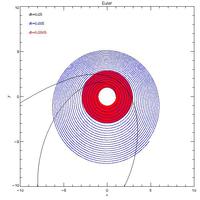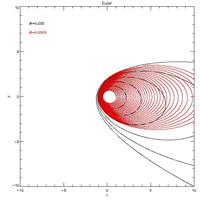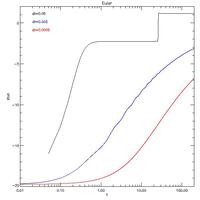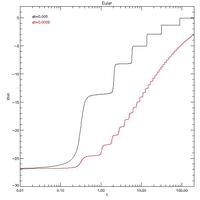- Simple version (this does all that we need it to do at the moment, but you should start thinking about how this might be improved to make it more “experimentation-friendly”):
example_simple.cc (colorized) - More complex version (in anticipation of future requirements; compare this to the simple version and try to understand the differences and similarities):
example.cc (colorized), example.h (colorized), Makefile (colorized) (rename to “Makefile” or use with “make -f Makefile_c”)
- Simple version (this is sufficient for the moment, but it doesn’t hurt you to start improving it as suggested above):
T4.f90 (colorized), Makefile (colorized) (rename to “Makefile” or use with “make -f Makefile_gfortran”) - More complex version:
(To be added later. We will reorganize the program structure when we get to multiple particles; think about how you would do this on your own.)
Discussion of the results:
Plot your results with gnuplot to see the evolution of the position of the earth, the total energy and how this depend on the numerical parameters you use.
Example plots:




Programming goals for T3:
Goal of this tutorial is that you learn how to use structures, while loops and how to pass variables to sub-routines. In addition you should deepen your knowledge of how to plot data with gnuplot.